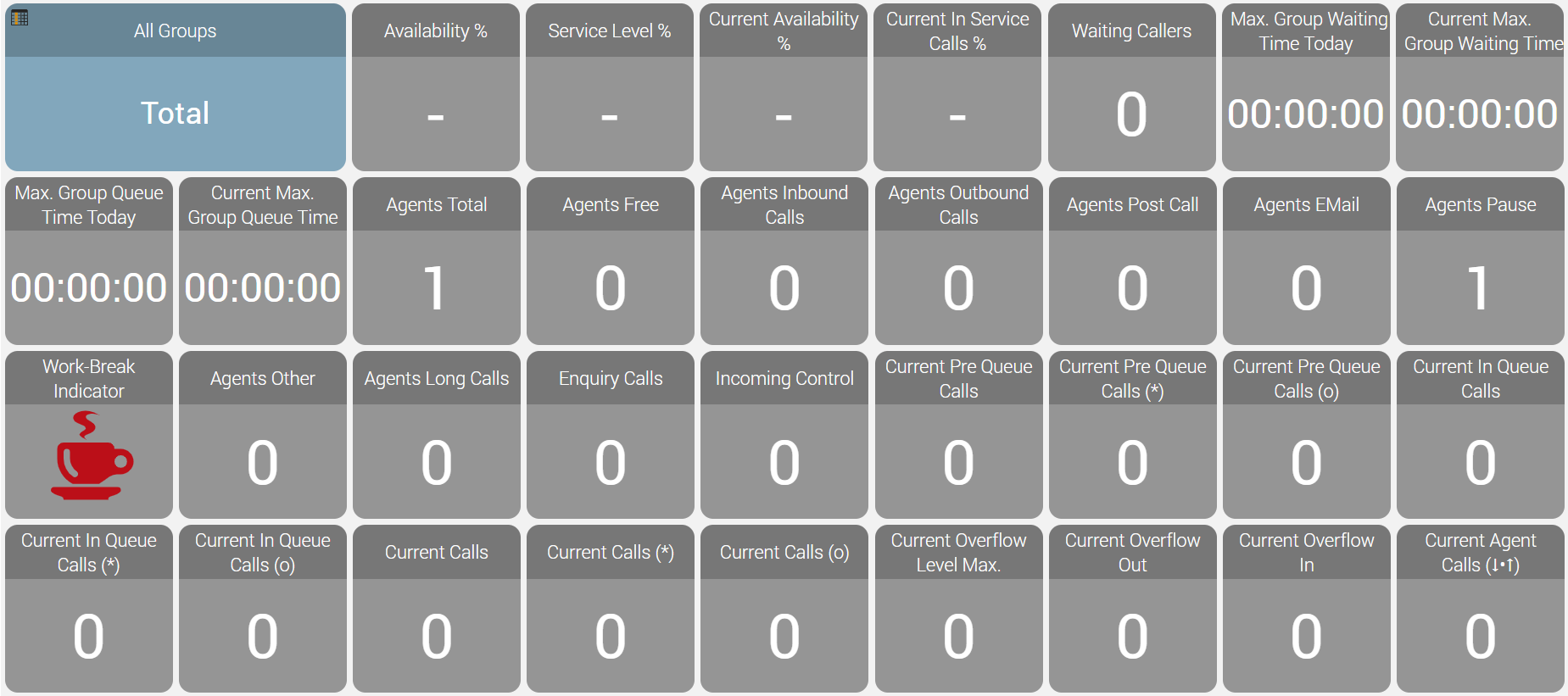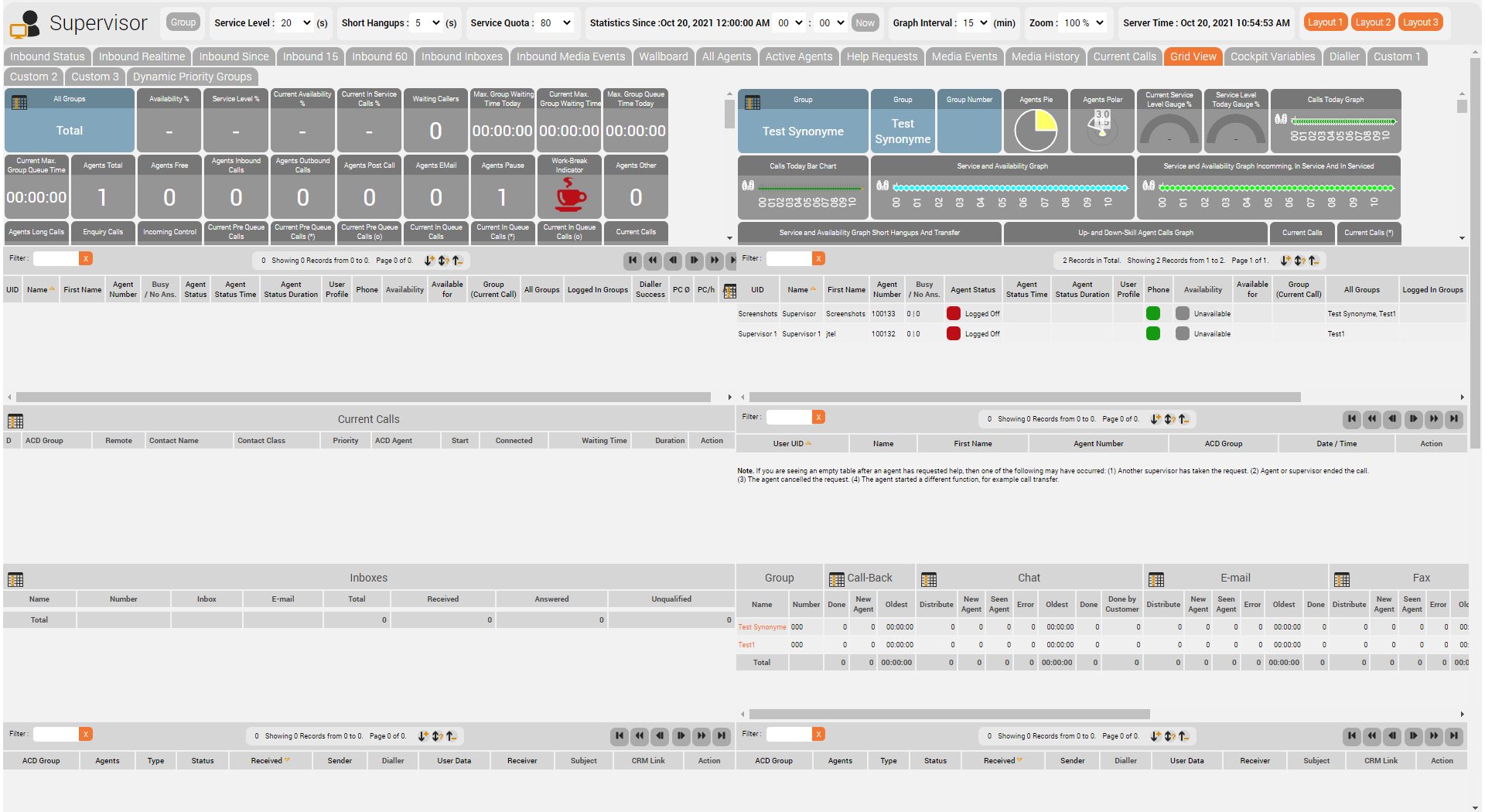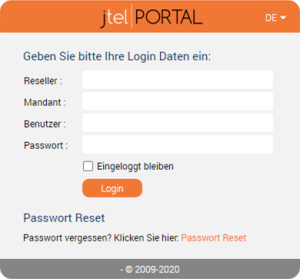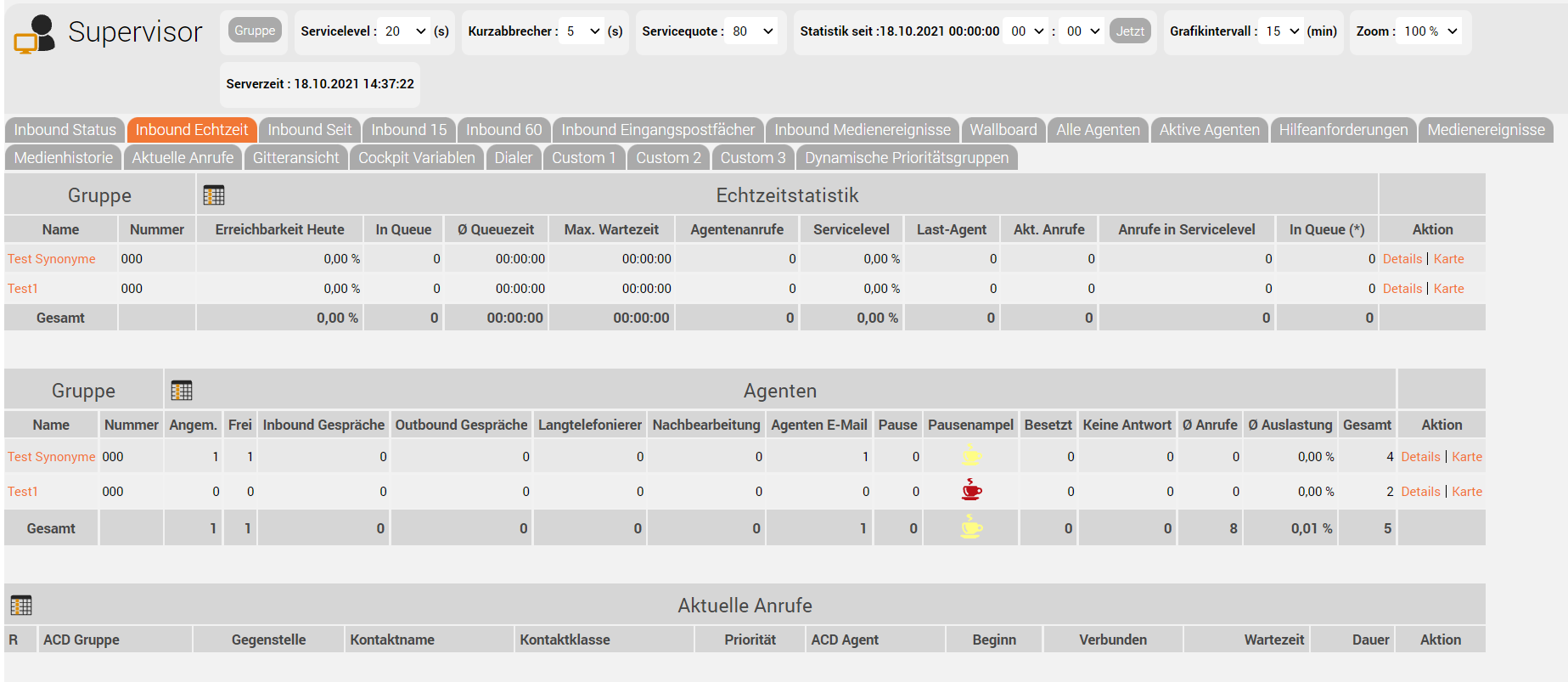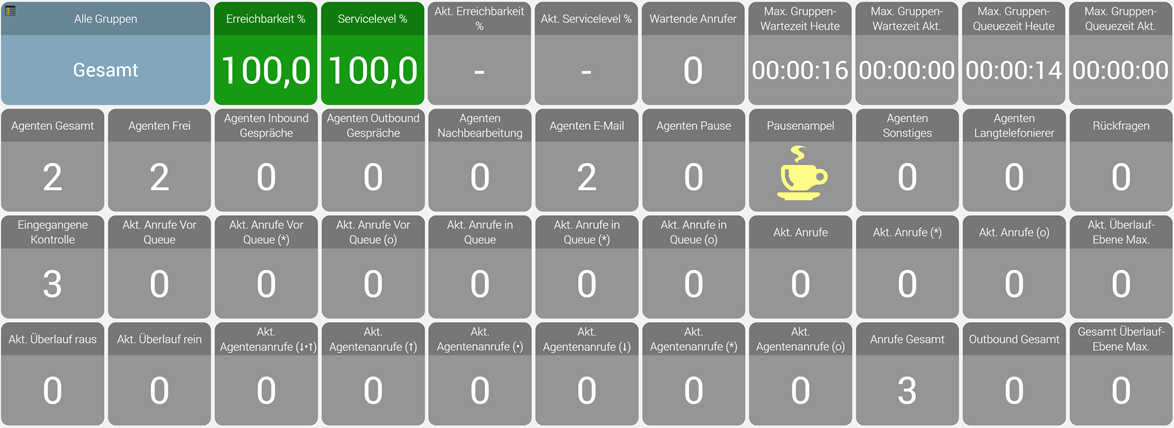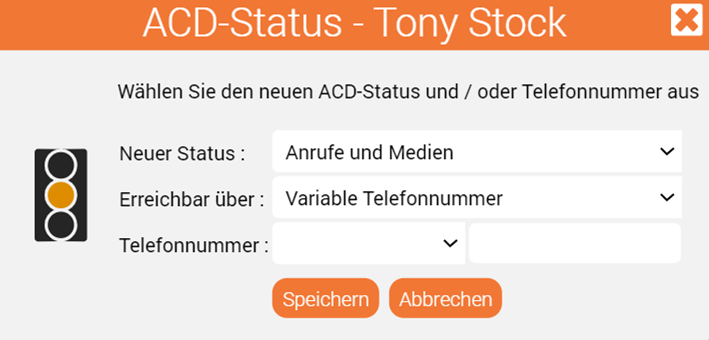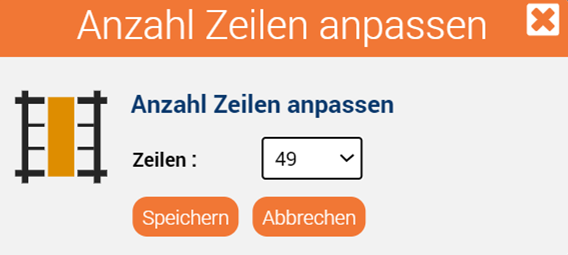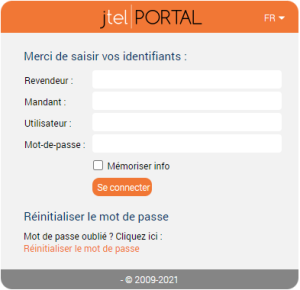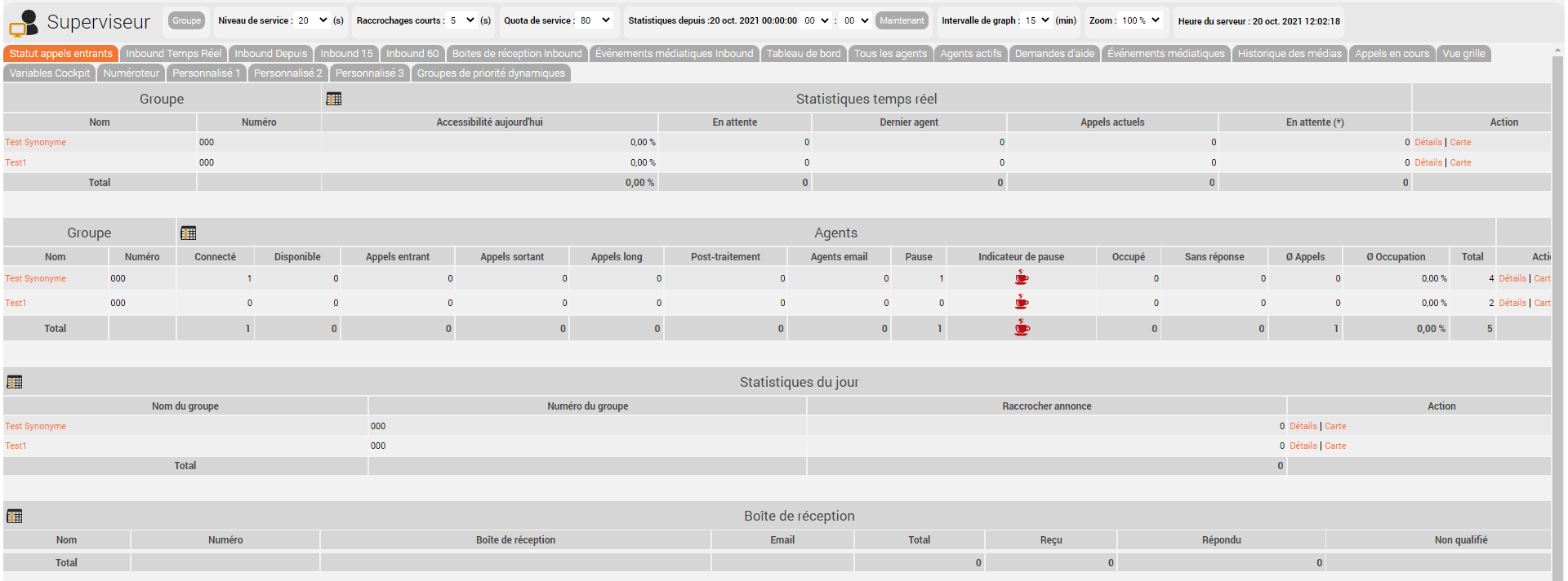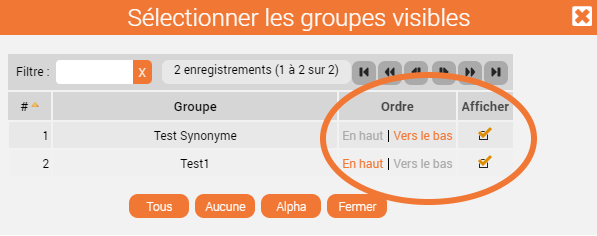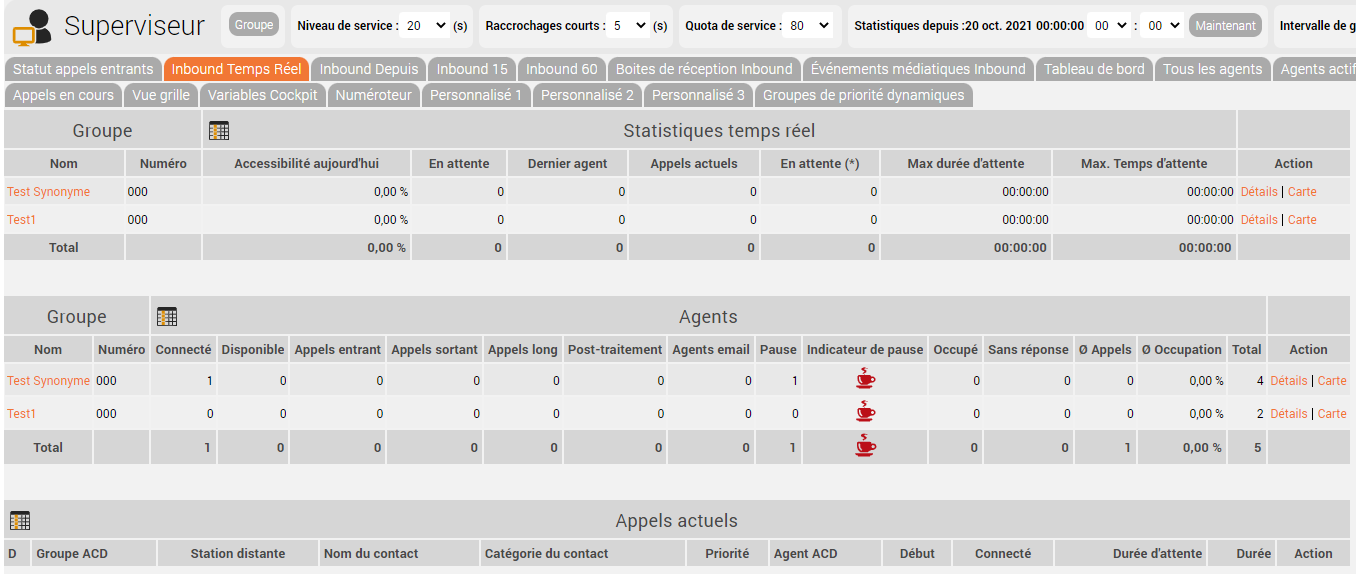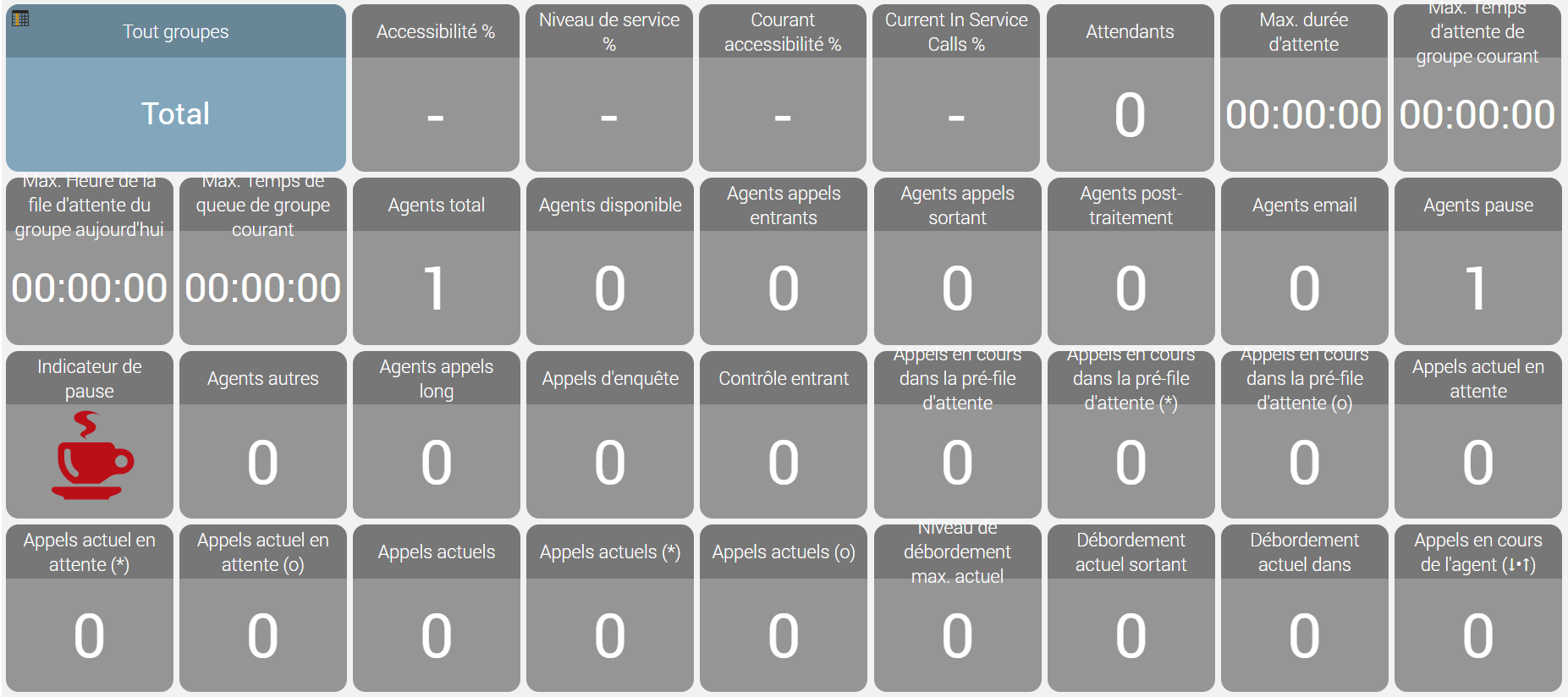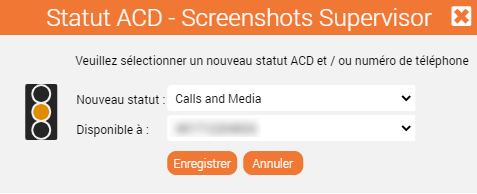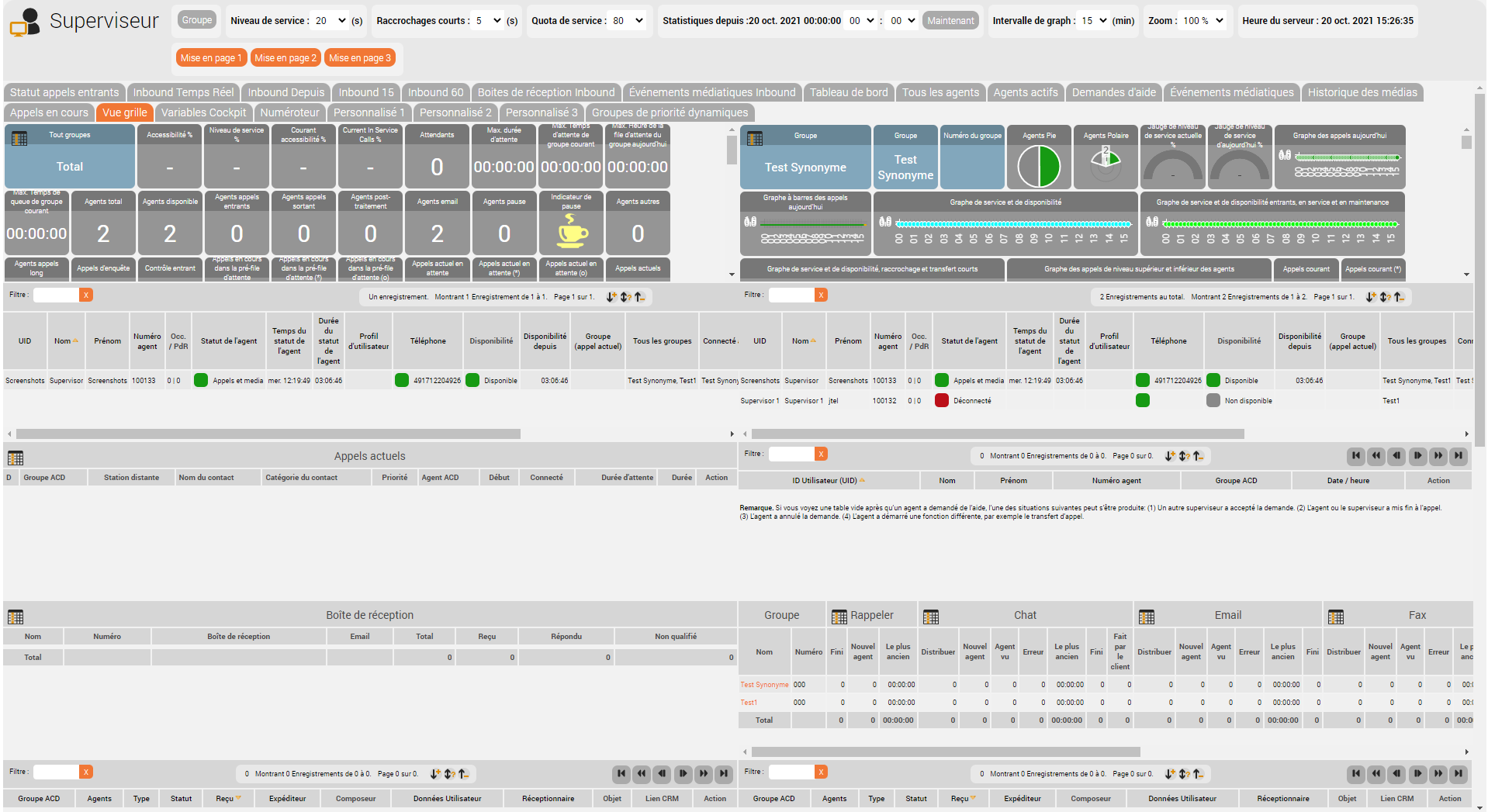| Sv translation | ||||||||||||||||||||||||||||||||||||||||||||||||||||||||||||||||||||||||||||||||||||||||||||||||||||||||||||||||||||||||||||||||||||||||||||||||||||||||||||||||||||||||||||||||||||||||||||||||||||||||||||||||||||||||||||||||||||||||||||||||||||||||||||||||||||||||||||||||||||||||||||||||||||||||||||
|---|---|---|---|---|---|---|---|---|---|---|---|---|---|---|---|---|---|---|---|---|---|---|---|---|---|---|---|---|---|---|---|---|---|---|---|---|---|---|---|---|---|---|---|---|---|---|---|---|---|---|---|---|---|---|---|---|---|---|---|---|---|---|---|---|---|---|---|---|---|---|---|---|---|---|---|---|---|---|---|---|---|---|---|---|---|---|---|---|---|---|---|---|---|---|---|---|---|---|---|---|---|---|---|---|---|---|---|---|---|---|---|---|---|---|---|---|---|---|---|---|---|---|---|---|---|---|---|---|---|---|---|---|---|---|---|---|---|---|---|---|---|---|---|---|---|---|---|---|---|---|---|---|---|---|---|---|---|---|---|---|---|---|---|---|---|---|---|---|---|---|---|---|---|---|---|---|---|---|---|---|---|---|---|---|---|---|---|---|---|---|---|---|---|---|---|---|---|---|---|---|---|---|---|---|---|---|---|---|---|---|---|---|---|---|---|---|---|---|---|---|---|---|---|---|---|---|---|---|---|---|---|---|---|---|---|---|---|---|---|---|---|---|---|---|---|---|---|---|---|---|---|---|---|---|---|---|---|---|---|---|---|---|---|---|---|---|---|---|---|---|---|---|---|---|---|---|---|---|---|---|---|---|---|---|---|---|---|---|---|---|---|---|---|---|---|---|---|---|---|---|
| ||||||||||||||||||||||||||||||||||||||||||||||||||||||||||||||||||||||||||||||||||||||||||||||||||||||||||||||||||||||||||||||||||||||||||||||||||||||||||||||||||||||||||||||||||||||||||||||||||||||||||||||||||||||||||||||||||||||||||||||||||||||||||||||||||||||||||||||||||||||||||||||||||||||||||||
IntroductionSupervisors and contact center managers use the supervisor module to manage the day-to-day operations in the contact center. Supervisors can see and manage the ACD groups and agents to which they are assigned. Various views give an overview of the performance of the contact center in real-time as well as aggregated statistics which are cumulated over the current day. Agents can request help from supervisors when involved in challenging calls. With one click the supervisor can conference himself into the agent’s call to provide the assistance required. In addition, the supervisor can view a real-time view of all incoming and outgoing media events and can display KPI's regarding the performance of the contact center in a configurable wallboard. Supervisors can change the assignment of agents to groups according to the current requirements of the contact center. They can also define the skills of agents within groups if this capability is enabled via their security group. Using the web messages module, they can send messages to agents directly or to a group of agents. This feature can be used to inform agents about important information regarding day-to-day operations in the contact center, such as special offers available or information to particular agents for administrative purposes like remembering their sick note or vacation application. Supervisors can also operate as normal agents, if needed. All functions available to agents are available to supervisors, who can, as the need arises, work actively in the contact center groups they are assigned to. The Supervisors can define, in the ACD groups assigned to them, which agents are available for the distribution of calls and events and with which skills they should be considered by the distribution algorithms configured in the ACD groups. Supervisors can view the availability The WebClient (Full/MiniClient) or the MiniClient is used to log in to the Supervisor Client. For the management functions - which require a larger viewport on the screen - the Full client is recommended. Details depend on the rights you have been granted in the system. Log inTo log in, open the jtel portal via your browser. Home ScreenToolbar
Available options (tiles)
HeaderOn the Inbound Status, Inbound Real Time, Inbound Since, Inbound 15, Inbound 60 and Wallboard tabs, there are some settings available in the header area that affect the statistics displayed.
Tabs
Media History | IIn this tab, completed media events for the supervisor's groups are displayed. The supervisor can view completed media events and, if necessary, reopen them to initiate further actions, such as forwarding the event to a specific agent or group. Current calls | Here supervisors can view the active calls within their assigned ACD groups. By clicking on the detail view of an active call, they can get more information about each call.
Grid View | Die Gitteransicht ist eine Kombination aus allen Ansichten. There are 3 layouts available. Cockpit Variables | xxx (Your cockpit variables are displayed here) | Dialler | Here you can find statistics on dialer campaigns. | Custom 1/2/3 | xxx | Dynamic Priority Groups | Here you will find statistics on Dynamic Priority Groups. | Call Control | The control number is the sum of the columns:
If the system is working correctly, the "Call - Control" and "Calls - Total" figures are the same. Agent Home Home view of the agent Agent Home (Braille) This version of Agent Home has been optimised for use with Braille readers. | User profiles xxx | Aggregation Groups xxx | Supervisor | The supervisor's main view is divided into intuitive tabs that the supervisor can select as needed. | Categories xxx User Master Data Supervisors can view and change their personal settings (e.g. change password, change language and settings that affect web views) | Chat Connectors Here you can edit the chat connector. Subscribed reports Supervisors can access their subscribed reports. Reports Supervisors can access standard reports. Depending on requirements, further reports can be activated for supervisors on a project-specific basis. Reports can be created on the fly or subscribed to, in which case they are sent to the supervisor by email. Several formats are available: PDF, CSV, HTML or Excel files. | Servic Numbers | Supervisors can view statistics on service numbers. | *Inbound Since, Inbound 15, Inbound 60
If the system is working correctly, the "Call - Control" and "Calls - Total" figures are the same. The calculated sum of the totals rows from the columns:
If the system is working correctly, the "Call - Control" and "Calls - Total" figures are the same. Mappings Here supervisors can define the affiliation of agents to ACD groups and their skills therein. Web Messages Supervisors can create and send messages to specific ACD groups and/or agents and supervisors. These messages are displayed in the recipients' web clients. It is possible to set a time period in which web messages are to be displayed. This way supervisors can prepare them in advance. Group messages can only be deleted by the supervisor and are automatically removed after the time stamp has expired. Personal messages can be deleted by the agent or supervisor and are automatically removed after the configured timestamp has expired. Menu - ACD | |||||||||||||||||||||||||||||||||||||||||||||||||||||||||||||||||||||||||||||||||||||||||||||||||||||||||||||||||||||||||||||||||||||||||||||||||||||||||||||||||||||||||||||||||||||||||||||||||||||||||||||||||||||||||||||||||||||||||||||||||||||||||||||||||||||||||||||||||||||||
Agent Home | Home view of the agent | |||||||||||||||||||||||||||||||||||||||||||||||||||||||||||||||||||||||||||||||||||||||||||||||||||||||||||||||||||||||||||||||||||||||||||||||||||||||||||||||||||||||||||||||||||||||||||||||||||||||||||||||||||||||||||||||||||||||||||||||||||||||||||||||||||||||||||||||||||||||||||||||||||||||||||
Agent Home (Braille) | This version of Agent Home has been optimised for use with Braille readers. | |||||||||||||||||||||||||||||||||||||||||||||||||||||||||||||||||||||||||||||||||||||||||||||||||||||||||||||||||||||||||||||||||||||||||||||||||||||||||||||||||||||||||||||||||||||||||||||||||||||||||||||||||||||||||||||||||||||||||||||||||||||||||||||||||||||||||||||||||||||||||||||||||||||||||||
| Aggregation Groups | xxx | |||||||||||||||||||||||||||||||||||||||||||||||||||||||||||||||||||||||||||||||||||||||||||||||||||||||||||||||||||||||||||||||||||||||||||||||||||||||||||||||||||||||||||||||||||||||||||||||||||||||||||||||||||||||||||||||||||||||||||||||||||||||||||||||||||||||||||||||||||||||||||||||||||||||||||
| Supervisor | The supervisor's main view is divided into intuitive tabs that the supervisor can select as needed. | |||||||||||||||||||||||||||||||||||||||||||||||||||||||||||||||||||||||||||||||||||||||||||||||||||||||||||||||||||||||||||||||||||||||||||||||||||||||||||||||||||||||||||||||||||||||||||||||||||||||||||||||||||||||||||||||||||||||||||||||||||||||||||||||||||||||||||||||||||||||||||||||||||||||||||
| Users Profiles | xxx | |||||||||||||||||||||||||||||||||||||||||||||||||||||||||||||||||||||||||||||||||||||||||||||||||||||||||||||||||||||||||||||||||||||||||||||||||||||||||||||||||||||||||||||||||||||||||||||||||||||||||||||||||||||||||||||||||||||||||||||||||||||||||||||||||||||||||||||||||||||||||||||||||||||||||||
Chat connectors | Here you can edit the chat connector. | |||||||||||||||||||||||||||||||||||||||||||||||||||||||||||||||||||||||||||||||||||||||||||||||||||||||||||||||||||||||||||||||||||||||||||||||||||||||||||||||||||||||||||||||||||||||||||||||||||||||||||||||||||||||||||||||||||||||||||||||||||||||||||||||||||||||||||||||||||||||||||||||||||||||||||
| Reports | Supervisors can access standard reports. Depending on requirements, further reports can be activated for supervisors on a project-specific basis. Reports can be created on the fly or subscribed to, in which case they are sent to the supervisor by email. Several formats are available: PDF, CSV, HTML or Excel files. | |||||||||||||||||||||||||||||||||||||||||||||||||||||||||||||||||||||||||||||||||||||||||||||||||||||||||||||||||||||||||||||||||||||||||||||||||||||||||||||||||||||||||||||||||||||||||||||||||||||||||||||||||||||||||||||||||||||||||||||||||||||||||||||||||||||||||||||||||||||||||||||||||||||||||||
Report Subscriptions | Supervisors can access your subscribed reports. | |||||||||||||||||||||||||||||||||||||||||||||||||||||||||||||||||||||||||||||||||||||||||||||||||||||||||||||||||||||||||||||||||||||||||||||||||||||||||||||||||||||||||||||||||||||||||||||||||||||||||||||||||||||||||||||||||||||||||||||||||||||||||||||||||||||||||||||||||||||||||||||||||||||||||||
| Servicerufnummern | Supervisors can view statistics on service numbers. | |||||||||||||||||||||||||||||||||||||||||||||||||||||||||||||||||||||||||||||||||||||||||||||||||||||||||||||||||||||||||||||||||||||||||||||||||||||||||||||||||||||||||||||||||||||||||||||||||||||||||||||||||||||||||||||||||||||||||||||||||||||||||||||||||||||||||||||||||||||||||||||||||||||||||||
Categories | xxx | |||||||||||||||||||||||||||||||||||||||||||||||||||||||||||||||||||||||||||||||||||||||||||||||||||||||||||||||||||||||||||||||||||||||||||||||||||||||||||||||||||||||||||||||||||||||||||||||||||||||||||||||||||||||||||||||||||||||||||||||||||||||||||||||||||||||||||||||||||||||||||||||||||||||||||
User Master Data | Supervisors can view and change their personal settings (e.g. change password, change language and settings that affect web views) |
Agent Home | Home view of the agent |
Agent Home (Braille) | This version of Agent Home has been optimised for use with Braille readers. |
User profiles | xxx |
Aggregation Groups | xxx |
| Supervisor | The supervisor's main view is divided into intuitive tabs that the supervisor can select as needed. |
Categories | xxx |
User Master Data | Supervisors can view and change their personal settings (e.g. change password, change language and settings that affect web views) |
Chat Connectors | Here you can edit the chat connector. |
Subscribed reports | Supervisors can access their subscribed reports. |
Reports | Supervisors can access standard reports. Depending on requirements, further reports can be activated for supervisors on a project-specific basis. Reports can be created on the fly or subscribed to, in which case they are sent to the supervisor by email. Several formats are available: PDF, CSV, HTML or Excel files. |
| Servic Numbers | Supervisors can view statistics on service numbers. |
*Inbound Since, Inbound 15, Inbound 60
| Calls Control | The control number is the sum of the columns:
| The calculated sum of the totals rows from the columns:
|
|---|
Mappings
Here supervisors can define the affiliation of agents to ACD groups and their skills therein.
Web Messages
Supervisors can create and send messages to specific ACD groups and/or agents and supervisors. These messages are displayed in the recipients' web clients. It is possible to set a time period in which web messages are to be displayed. This way supervisors can prepare them in advance. Group messages can only be deleted by the supervisor and are automatically removed after the time stamp has expired. Personal messages can be deleted by the agent or supervisor and are automatically removed after the configured timestamp has expired.
Menu - ACD
Agent Home | Home view of the agent |
Agent Home (Braille) | This version of Agent Home has been optimised for use with Braille readers. |
| Aggregation Groups | xxx |
| Supervisor | The supervisor's main view is divided into intuitive tabs that the supervisor can select as needed. |
| Users Profiles | xxx |
Menu - Chat
Chat connectors | Here you can edit the chat connector. |
Menu - Statistics
| Reports | Supervisors can access standard reports. Depending on requirements, further reports can be activated for supervisors on a project-specific basis. Reports can be created on the fly or subscribed to, in which case they are sent to the supervisor by email. Several formats are available: PDF, CSV, HTML or Excel files. |
Report Subscriptions | Supervisors can access your subscribed reports. |
| Servicerufnummern | Supervisors can view statistics on service numbers. |
Menu - User Data
Categories | xxx |
User Master Data | Supervisors can view and change their personal settings (e.g. change password, change language and settings that affect web views) |
| Sv translation | |||||||||||||||||||||||||||||||||||||||||||||||||||||||
|---|---|---|---|---|---|---|---|---|---|---|---|---|---|---|---|---|---|---|---|---|---|---|---|---|---|---|---|---|---|---|---|---|---|---|---|---|---|---|---|---|---|---|---|---|---|---|---|---|---|---|---|---|---|---|---|
| |||||||||||||||||||||||||||||||||||||||||||||||||||||||
EinleitungSupervisoren und Contact Center-Manager verwalten den täglichen Betrieb im Contact Center. Supervisoren können die ACD-Gruppen und Agenten, denen sie zugewiesen sind, sehen und verwalten. Verschiedene Ansichten geben einen Überblick über die Leistung des Contact Centers in Echtzeit sowie über aggregierte Statistiken, die über den aktuellen Tag kumuliert werden. Agenten können bei schwierigen Anrufen die Hilfe von Supervisoren anfordern. Mit einem Klick kann sich der Supervisor in den Anruf des Agenten einschalten, um die benötigte Hilfe zu leisten. Darüber hinaus kann der Supervisor eine Echtzeitansicht aller ein- und ausgehenden Medienereignisse einsehen und KPIs zur Leistung des Contact Centers in einem konfigurierbaren Wallboard anzeigen. Supervisoren können die Zuordnung von Agenten zu | |||||||||||||||||||||||||||||||||||||||||||||||||||||||
| Sv translation | |||||||||||||||||||||||||||||||||||||||||||||||||||||||
| |||||||||||||||||||||||||||||||||||||||||||||||||||||||
EinleitungSupervisoren und Contact Center-Manager verwalten den täglichen Betrieb im Contact Center. Supervisoren können die ACD-Gruppen und Agenten, denen sie zugewiesen sind, sehen und verwalten. Verschiedene Ansichten geben einen Überblick über die Leistung des Contact Centers in Echtzeit sowie über aggregierte Statistiken, die über den aktuellen Tag kumuliert werden. Agenten können bei schwierigen Anrufen die Hilfe von Supervisoren anfordern. Mit einem Klick kann sich der Supervisor in den Anruf des Agenten einschalten, um die benötigte Hilfe zu leisten. Darüber hinaus kann der Supervisor eine Echtzeitansicht aller ein- und ausgehenden Medienereignisse einsehen und KPIs zur Leistung des Contact Centers in einem konfigurierbaren Wallboard anzeigen. Supervisoren können die Zuordnung von Agenten zu Gruppen entsprechend den aktuellen Anforderungen des Contact Centers ändern. Sie können auch die Fähigkeiten der Agenten innerhalb der Gruppen festlegen, wenn diese Fähigkeit über ihre Sicherheitsgruppe aktiviert ist. Der Supervisor kann Nachrichten direkt an Agenten oder an eine Gruppe von Agenten senden. Diese Funktion kann genutzt werden, um Agenten über wichtige Informationen zum Tagesgeschäft im Contact Center zu informieren, z. B. über verfügbare Sonderangebote oder Informationen für bestimmte Agenten zu administrativen Zwecken, wie z. B. die Erinnerung an ihre Krankmeldung oder ihren Urlaubsantrag. jtel Supervisoren können bei Bedarf auch wie normale Agenten arbeiten. Alle Funktionen, die Agenten zur Verfügung stehen, stehen auch Supervisoren zur Verfügung, die bei Bedarf aktiv in den Contact-Center-Gruppen arbeiten können, denen sie zugeordnet sind. Zu den verfügbaren Kanälen gehören eingehende/ausgehende Anrufe, Chat, E-Mail, WhatsApp, Voicemail und Rückrufe. Darüber hinaus können Supervisoren die Contact Center-Gruppen und Agenten verwalten. Bei Bedarf können ihre Konten so konfiguriert werden, dass nur die Verwaltungsfunktionen verfügbar sind und sie nicht an der Annahme von Anrufen oder der Bearbeitung von Medienereignissen teilnehmen. Weitere Informationen zu den Agentenfunktionen finden Sie unter "AgentHome". Supervisoren können in den ihnen zugewiesenen ACD-Gruppen festlegen, welche Agenten für die Verteilung von Anrufen und Ereignissen zur Verfügung stehen und mit welchen Fähigkeiten sie von den in den ACD-Gruppen konfigurierten Verteilungsalgorithmen berücksichtigt werden sollen. Supervisoren können die Verfügbarkeit von Agenten und entsprechende Anrufinformationen über eine intuitive, in Registerkarten organisierte Oberfläche einsehen. Darüber hinaus können Supervisoren wichtige KPIs in einem persönlichen Wallboard konfigurieren und Berichte im laufenden Betrieb erstellen oder über Abonnements generieren, die ihnen zeitgesteuert per E-Mail zugesandt werden. Zur Anmeldung am Supervisor Client wird der WebClient (Full/MiniClient) oder der MiniClient verwendet. Für die Verwaltungsfunktionen - die ein größeres Ansichtsfenster auf dem Bildschirm erfordern - wird der Full-Client empfohlen. Einzelheiten sind abhängig von den Rechten, die Ihnen im System eingeräumt wurden. AnmeldenUm sich einzuloggen, öffnen Sie das jtel Portal über Ihren Browser Start BildschirmSymbolleiste | |||||||||||||||||||||||||||||||||||||||||||||||||||||||
Kaffeetasse Symbol = Arbeitspausenanzeige Die Arbeitspausenanzeige zeigt an, ob es momentan möglich ist, eine Pause zu machen. Er zeigt die Anzahl der angemeldeten Agenten in Relation zu der in den ACD-Gruppeneinstellungen konfigurierten maximalen Anzahl der Agenten, die eine Pause machen dürfen.
| |||||||||||||||||||||||||||||||||||||||||||||||||||||||
Briefumschlag Symbol = Medienereignisse Neue Medienereignisse werden durch ein blinkendes Briefumschlagsymbol in der Symbolleiste angezeigt. | |||||||||||||||||||||||||||||||||||||||||||||||||||||||
Megafon Symbol = Bannermeldung Neue Bannermeldungen werden durch das blinkende Megafon Symbol in der Symbolleiste angezeigt. Der Supervisor kann Bannermeldungen an Gruppen oder an einzelne Agenten senden (z.B. "Vergessen Sie das heutige Sonderangebot nicht..." oder "Lieber Sam, bitte denken Sie daran, Ihren Status auf Pause zu ändern, wenn Sie einen Kaffee trinken gehen") | |||||||||||||||||||||||||||||||||||||||||||||||||||||||
Headset Symbol = Supervisor Anforderung Wenn ein Agent den Supervisor für Hilfe anfordert, blinkt das Headset Symbol. | Status Auswahl von definierten Zuständen wie Anrufe und Medien, Pause und mehr je nach kundenspezifischen Anforderungen. Telefonnummern Telefonnummern: Auswahl von definierten Telefonnummern für die Erreichbarkeit des Supervisors (z. B. Büro, Mobil, Homeoffice etc.) | ||||||||||||||||||||||||||||||||||||||||||||||||||||||
Agent Home | Home-Ansicht des Agenten. | ||||||||||||||||||||||||||||||||||||||||||||||||||||||
Agent Home (Braille) | Diese Version von Agent Home wurde für die Nutzung mit Braille-Reader optimiert. | ||||||||||||||||||||||||||||||||||||||||||||||||||||||
Berichte | Supervisor können auf Standardberichte zugreifen. Je nach Bedarf können weitere Berichte projektspezifisch für Supervisor aktiviert werden. Berichte können im laufenden Betrieb erstellt oder abonniert werden, in diesem Fall werden sie per E-Mail an den Supervisor gesendet. Es sind mehrere Formate verfügbar: PDF, CSV, HTML oder Excel-Dateien. | ||||||||||||||||||||||||||||||||||||||||||||||||||||||
| Stammdaten Benutzer | Benutzer können ihre persönlichen Einstellungen anzeigen und ändern (z.B. Kennwort ändern, Sprache und Einstellungen ändern, die sich auf die Webansichten auswirken) | ||||||||||||||||||||||||||||||||||||||||||||||||||||||
Supervisor | Die Hauptansicht des Supervisors ist in intuitive Registerkarten unterteilt, die der Supervisor nach Bedarf auswählen kann. Als Supervisor verschaffen Sie sich z.B. eine Übersicht über den Status der von Ihnen überwachten Gruppen und Agenten. Hier können Sie wesentliche Parameter des Callcenters bei laufendem Betrieb im Auge behalten. In der Toolbar werden bei besonderen Vorkommnissen (z.B. Hilfeanforderung von Agenten) Symbole angezeigt. In den Köpfen einiger Tabellenspalten sehen Sie die Symbole oder . Damit können Sie die Sichtbarkeit von Tabelleninhalten steuern. Nach Anklicken von erscheint ein Dialog, in dem Sie Tabellenreihen zur Ansicht aus- und abwählen können. Nach Anklicken von erscheint ein Dialog, in dem Sie die Sichtbarkeit und Reihenfolge von Tabellenspalten festlegen können. Die Funktionsweise ist im Abschnitt "Die Benutzeroberfläche" beschrieben. Wenn Sie in der ersten Tabellen in der Spalte Aktion auf Details klicken, gelangen Sie zu einer Ansicht, in der Sie Details der ACD für die gewählte Gruppe ansehen und konfigurieren können. Mit Karte blenden Sie eine Landkarte der Anrufer der Gruppe ein. Jeder Anruf wird mit einer Stecknadel dargestellt, mehrere Anrufe werden zusammengefasst in einer Scheibe. Dies gibt Ihnen ein Überblick über die Verteilung Ihrer Anrufe auf der Landkarte. Um diesen Dienst zu nutzen, müssen die Vorwahlen im System mit Geo-Daten gepflegt sein. Fragen Sie Ihren Systemadministrator, ob diese Darstellung für Ihre Region oder Ihr Land verfügbar ist. | ||||||||||||||||||||||||||||||||||||||||||||||||||||||
Dialer-Kampagnen (Optionales Feature) | Supervisors können ausgehende Kampagnen erstellen und sie Agenten zuweisen (Kampagnenmanagement). Manuelle oder automatisierte Dialer-Kampagnen können erstellt werden. | ||||||||||||||||||||||||||||||||||||||||||||||||||||||
| Ansagen (Optionales Feature) | Der Supervisor kann die Sprachansagen für die ACD oder das IVR hochladen und ändern. | ||||||||||||||||||||||||||||||||||||||||||||||||||||||
| Gruppe | Über die Aktionsfläche "Gruppe" können die relevanten Gruppen für jeden Bereich (Inbound Status, Gitteransicht, Wallboard, etc.) ausgewählt werden. | ||||||||||||||||||||||||||||||||||||||||||||||||||||||
Servicelevel | Hier stellen Sie ein, welche Zeit Sie als Servicelevel für die Berechnung einiger der Werte in den Tabellen nutzen möchten. | ||||||||||||||||||||||||||||||||||||||||||||||||||||||
Kurzabbrecher | Hier stellen Sie ein, bis zu welcher Zeit Anrufe als Kurzabbrecher gezählt werden. Kurzabbrecher sind solche Anrufer, die angekommen in der Warteschleife, innerhalb kürzester Zeit auflegen. | ||||||||||||||||||||||||||||||||||||||||||||||||||||||
Servicequote | Für die Berechnung der Spalte X% beantwortet in (s), stellen Sie hier ein welche Prozentzahl der Anrufe Sie betrachten möchten. | ||||||||||||||||||||||||||||||||||||||||||||||||||||||
Statistik seit | Hier wird angezeigt, seit wann Anrufe für die Statistik berücksichtigt werden. Hier können Sie über die entsprechenden Drop-Down Listen den Wert der Stunde sowie Minute verändern. Wenn Sie auf klicken, wird die aktuelle Serverzeit eingestellt. | ||||||||||||||||||||||||||||||||||||||||||||||||||||||
Grafikintervall | Hier stellen Sie die Granularität einige der Grafiken im Reiter Wallboard ein. | ||||||||||||||||||||||||||||||||||||||||||||||||||||||
Zoom | Durch die Zoom-Funktion können die einzelnen Kacheln minimiert werden, um so möglichst viele auf einen Bildschirm darstellen zu können. | ||||||||||||||||||||||||||||||||||||||||||||||||||||||
| Serverzeit | Hier wird als Information die aktuelle Serverzeit angezeigt. |
Kaffeetasse Symbol = Arbeitspausenanzeige Die Arbeitspausenanzeige zeigt an, ob es momentan möglich ist, eine Pause zu machen. Er zeigt die Anzahl der angemeldeten Agenten in Relation zu der in den ACD-Gruppeneinstellungen konfigurierten maximalen Anzahl der Agenten, die eine Pause machen dürfen.
| |
Briefumschlag Symbol = Medienereignisse Neue Medienereignisse werden durch ein blinkendes Briefumschlagsymbol in der Symbolleiste angezeigt. | |
Megafon Symbol = Bannermeldung Neue Bannermeldungen werden durch das blinkende Megafon Symbol in der Symbolleiste angezeigt. Der Supervisor kann Bannermeldungen an Gruppen oder an einzelne Agenten senden (z.B. "Vergessen Sie das heutige Sonderangebot nicht..." oder "Lieber Sam, bitte denken Sie daran, Ihren Status auf Pause zu ändern, wenn Sie einen Kaffee trinken gehen") | |
Headset Symbol = Supervisor Anforderung Wenn ein Agent den Supervisor für Hilfe anfordert, blinkt das Headset Symbol. |
Status Auswahl von definierten Zuständen wie Anrufe und Medien, Pause und mehr je nach kundenspezifischen Anforderungen. Telefonnummern Telefonnummern: Auswahl von definierten Telefonnummern für die Erreichbarkeit des Supervisors (z. B. Büro, Mobil, Homeoffice etc.) |
Verfügbare Optionen (Kacheln)
Agent Home | Home-Ansicht des Agenten. |
Agent Home (Braille) | Diese Version von Agent Home wurde für die Nutzung mit Braille-Reader optimiert. |
Berichte | Supervisor können auf Standardberichte zugreifen. Je nach Bedarf können weitere Berichte projektspezifisch für Supervisor aktiviert werden. Berichte können im laufenden Betrieb erstellt oder abonniert werden, in diesem Fall werden sie per E-Mail an den Supervisor gesendet. Es sind mehrere Formate verfügbar: PDF, CSV, HTML oder Excel-Dateien. |
| Stammdaten Benutzer | Benutzer können ihre persönlichen Einstellungen anzeigen und ändern (z.B. Kennwort ändern, Sprache und Einstellungen ändern, die sich auf die Webansichten auswirken) |
Supervisor | Die Hauptansicht des Supervisors ist in intuitive Registerkarten unterteilt, die der Supervisor nach Bedarf auswählen kann. Als Supervisor verschaffen Sie sich z.B. eine Übersicht über den Status der von Ihnen überwachten Gruppen und Agenten. Hier können Sie wesentliche Parameter des Callcenters bei laufendem Betrieb im Auge behalten. In der Toolbar werden bei besonderen Vorkommnissen (z.B. Hilfeanforderung von Agenten) Symbole angezeigt. In den Köpfen einiger Tabellenspalten sehen Sie die Symbole oder . Damit können Sie die Sichtbarkeit von Tabelleninhalten steuern. Nach Anklicken von erscheint ein Dialog, in dem Sie Tabellenreihen zur Ansicht aus- und abwählen können. Nach Anklicken von erscheint ein Dialog, in dem Sie die Sichtbarkeit und Reihenfolge von Tabellenspalten festlegen können. Die Funktionsweise ist im Abschnitt "Die Benutzeroberfläche" beschrieben. Wenn Sie in der ersten Tabellen in der Spalte Aktion auf Details klicken, gelangen Sie zu einer Ansicht, in der Sie Details der ACD für die gewählte Gruppe ansehen und konfigurieren können. Mit Karte blenden Sie eine Landkarte der Anrufer der Gruppe ein. Jeder Anruf wird mit einer Stecknadel dargestellt, mehrere Anrufe werden zusammengefasst in einer Scheibe. Dies gibt Ihnen ein Überblick über die Verteilung Ihrer Anrufe auf der Landkarte. Um diesen Dienst zu nutzen, müssen die Vorwahlen im System mit Geo-Daten gepflegt sein. Fragen Sie Ihren Systemadministrator, ob diese Darstellung für Ihre Region oder Ihr Land verfügbar ist. |
Dialer-Kampagnen (Optionales Feature) | Supervisors können ausgehende Kampagnen erstellen und sie Agenten zuweisen (Kampagnenmanagement). Manuelle oder automatisierte Dialer-Kampagnen können erstellt werden. |
| Ansagen (Optionales Feature) | Der Supervisor kann die Sprachansagen für die ACD oder das IVR hochladen und ändern. |
Header
Auf den Reitern Inbound-Status, Inbound Echtzeit, Inbound Seit, Inbound 15, Inbound 60 und Wallboard sind im Header-Bereich einige Einstellungen verfügbar, die Einfluss auf die angezeigten Statistiken haben.
| Gruppe | Über die Aktionsfläche "Gruppe" können die relevanten Gruppen für jeden Bereich (Inbound Status, Gitteransicht, Wallboard, etc.) ausgewählt werden. |
Servicelevel | Hier stellen Sie ein, welche Zeit Sie als Servicelevel für die Berechnung einiger der Werte in den Tabellen nutzen möchten. |
Kurzabbrecher | Hier stellen Sie ein, bis zu welcher Zeit Anrufe als Kurzabbrecher gezählt werden. Kurzabbrecher sind solche Anrufer, die angekommen in der Warteschleife, innerhalb kürzester Zeit auflegen. |
Servicequote | Für die Berechnung der Spalte X% beantwortet in (s), stellen Sie hier ein welche Prozentzahl der Anrufe Sie betrachten möchten. |
Statistik seit | Hier wird angezeigt, seit wann Anrufe für die Statistik berücksichtigt werden. Hier können Sie über die entsprechenden Drop-Down Listen den Wert der Stunde sowie Minute verändern. Wenn Sie auf klicken, wird die aktuelle Serverzeit eingestellt. |
Grafikintervall | Hier stellen Sie die Granularität einige der Grafiken im Reiter Wallboard ein. |
Zoom | Durch die Zoom-Funktion können die einzelnen Kacheln minimiert werden, um so möglichst viele auf einen Bildschirm darstellen zu können. |
| Serverzeit | Hier wird als Information die aktuelle Serverzeit angezeigt. |
Registerkarten
Inbound Status | Hier finden Sie Echtzeitstatistiken zu aktuellen Anrufen und Ereignissen im System für die Gruppen, denen der Supervisor mit Supervisor-Rechten zugeordnet ist. Supervisoren können die Statistik so einrichten, dass nur Ereignisse und Anrufe ab einem bestimmten Zeitpunkt angezeigt werden. Zum Beispiel seit dem Beginn ihrer Arbeitsschicht. Hier können Sie Gruppen für die Ansicht im Supervisor ein- oder ausblenden. Über diesen Reiter lassen sich Inhalte aus Supervisor - Echtzeit Werte, Supervisor - Tagesstatistik sowie Supervisor - Medienereignisse anzeigen. | ||||||||||||||||||||||||||||||||||||||||||||||||||||||
Inbound Echtzeit | Hier finden Sie die Echtzeitstatistiken zu einkommenden Anrufen für die Gruppen, denen der Supervisor mit Supervisor-Rechten zugeordnet ist. Alle Anrufe, die Abgeschlossen wurden, werden hier nicht berücksichtigt. Erreichbarkeit und Servicelevel beziehen sich immer nur auf die aktuellen Anrufe. Über diesen Reiter lassen sich Inhalte aus Supervisor - Echtzeit Werte anzeigen. | ||||||||||||||||||||||||||||||||||||||||||||||||||||||
Inbound Seit | Hier finden Sie Tagesstatistiken. Der Zeitpunkt, ab wann Anrufe angezeigt werden, lässt sich in dem Header einstellen. Über diesen Reiter lassen sich Inhalte aus Supervisor - Tagesstatistik anzeigen. | ||||||||||||||||||||||||||||||||||||||||||||||||||||||
Inbound 15 | Hier finden Sie die Tagesstatistiken der letzten 15 Minuten. Über diesen Reiter lassen sich Inhalte aus Supervisor - Tagesstatistik anzeigen, jedoch nicht eingegrenzt nach Statistik seit, sondern Werte der letzten 15 Minuten. | ||||||||||||||||||||||||||||||||||||||||||||||||||||||
Inbound 60 | Hier finden Sie die Tagesstatistiken der letzten 60 Minuten. Über diesen lassen sich Inhalte aus Supervisor - Tagesstatistik anzeigen, jedoch nicht eingegrenzt nach Statistik seit, sondern Werte der letzten 60 Minuten. | ||||||||||||||||||||||||||||||||||||||||||||||||||||||
Inbound Eingangspostfächer | Hier finden Sie Statistiken zu E-Mail. (Gesamt, Zugestellt, Beantwortet, Unqualifiziert) | ||||||||||||||||||||||||||||||||||||||||||||||||||||||
| Inbound Medienereignisse | Hier finden Sie Statistiken zu allen Medienereignisse. (Call-Back, Chat, E-Mail, Fax, SMS, Ticket, Voice-Mail)
Über diesen Reiter lassen sich Inhalte aus Supervisor - Medienereignisse anzeigen. | ||||||||||||||||||||||||||||||||||||||||||||||||||||||
| Wallboard | Das Wallboard bietet Supervisoren eine Live-Ansicht des Contact Centers über alle Gruppen und Einzelgruppen, die der Supervisor zu verwalten hat. Es werden zahlreiche Leistungskennzahlen (KPIs) bereitgestellt, wie z. B.: Supervisoren können die Leistungskennzahlen (KPIs) nach Bedarf anordnen, um eine auf ihre Bedürfnisse zugeschnittene Ansicht zu erhalten. Über diesen Reiter lassen sich Inhalte aus Supervisor - Wallboard Gesamt, Supervisor - Wallboard Grafiken sowie Supervisor - Wallboard pro Gruppe anzeigen. Direktaufruf des Wallboards: Es besteht die Möglichkeit, das Wallboard anzuzeigen, ohne sich am Portal anzumelden und die Supervisor-Funktion im Menü aufzurufen. Dazu geben Sie die URL des Wallboards direkt in der Adresszeile des Browsers ein. Die URL enthält Ihre Login-Daten und verschiedene Parameter, mit denen Sie das Wallboard anpassen können. Die folgende Zeile dient Ihnen als Vorlage für die URL:
Die Platzhalter in Klammern ersetzen Sie mit den tatsächlichen UIDs und Strings für Server, Reseller, Client, Benutzer und Passwort. Die UIDs können Sie den im Portal hinterlegten Benutzerdaten entnehmen. Wenn Sie das Wallboard auf eine ACD-Gruppe beschränken möchten, fügen Sie Hier ein fiktives Beispiel: Es empfiehlt sich, für diese Funktion einen gesonderten Benutzer mit Supervisor-Rechten anzulegen. | ||||||||||||||||||||||||||||||||||||||||||||||||||||||
| Alle Agenten | Zeigt alle Agenten in den ACD-Gruppen, die dem Supervisor zugeordnet sind, vor vor allem deren aktuellen Status gemäß den vorhandenen Statuskategorien. Beispiel: Die Tabelle zeigt folgende Spalten:
|
Registerkarten
Inbound Status | Hier finden Sie Echtzeitstatistiken zu aktuellen Anrufen und Ereignissen im System für die Gruppen, denen der Supervisor mit Supervisor-Rechten zugeordnet ist. Supervisoren können die Statistik so einrichten, dass nur Ereignisse und Anrufe ab einem bestimmten Zeitpunkt angezeigt werden. Zum Beispiel seit dem Beginn ihrer Arbeitsschicht. Hier können Sie Gruppen für die Ansicht im Supervisor ein- oder ausblenden. Über diesen Reiter lassen sich Inhalte aus Supervisor - Echtzeit Werte, Supervisor - Tagesstatistik sowie Supervisor - Medienereignisse anzeigen. | ||||||||||||||||||||||||||||||||||
Inbound Echtzeit | Hier finden Sie die Echtzeitstatistiken zu einkommenden Anrufen für die Gruppen, denen der Supervisor mit Supervisor-Rechten zugeordnet ist. Alle Anrufe, die Abgeschlossen wurden, werden hier nicht berücksichtigt. Erreichbarkeit und Servicelevel beziehen sich immer nur auf die aktuellen Anrufe. Über diesen Reiter lassen sich Inhalte aus Supervisor - Echtzeit Werte anzeigen. | ||||||||||||||||||||||||||||||||||
Inbound Seit | Hier finden Sie Tagesstatistiken. Der Zeitpunkt, ab wann Anrufe angezeigt werden, lässt sich in dem Header einstellen. Über diesen Reiter lassen sich Inhalte aus Supervisor - Tagesstatistik anzeigen. | ||||||||||||||||||||||||||||||||||
Inbound 15 | Hier finden Sie die Tagesstatistiken der letzten 15 Minuten. Über diesen Reiter lassen sich Inhalte aus Supervisor - Tagesstatistik anzeigen, jedoch nicht eingegrenzt nach Statistik seit, sondern Werte der letzten 15 Minuten. | ||||||||||||||||||||||||||||||||||
Inbound 60 | Hier finden Sie die Tagesstatistiken der letzten 60 Minuten. Über diesen lassen sich Inhalte aus Supervisor - Tagesstatistik anzeigen, jedoch nicht eingegrenzt nach Statistik seit, sondern Werte der letzten 60 Minuten. | ||||||||||||||||||||||||||||||||||
Inbound Eingangspostfächer | Hier finden Sie Statistiken zu E-Mail. (Gesamt, Zugestellt, Beantwortet, Unqualifiziert) | ||||||||||||||||||||||||||||||||||
| Inbound Medienereignisse | Hier finden Sie Statistiken zu allen Medienereignisse. (Call-Back, Chat, E-Mail, Fax, SMS, Ticket, Voice-Mail)
Über diesen Reiter lassen sich Inhalte aus Supervisor - Medienereignisse anzeigen. | ||||||||||||||||||||||||||||||||||
| Wallboard | Das Wallboard bietet Supervisoren eine Live-Ansicht des Contact Centers über alle Gruppen und Einzelgruppen, die der Supervisor zu verwalten hat. Es werden zahlreiche Leistungskennzahlen (KPIs) bereitgestellt, wie z. B.: Supervisoren können die Leistungskennzahlen (KPIs) nach Bedarf anordnen, um eine auf ihre Bedürfnisse zugeschnittene Ansicht zu erhalten. Über diesen Reiter lassen sich Inhalte aus Supervisor - Wallboard Gesamt, Supervisor - Wallboard Grafiken sowie Supervisor - Wallboard pro Gruppe anzeigen. Direktaufruf des Wallboards: Es besteht die Möglichkeit, das Wallboard anzuzeigen, ohne sich am Portal anzumelden und die Supervisor-Funktion im Menü aufzurufen. Dazu geben Sie die URL des Wallboards direkt in der Adresszeile des Browsers ein. Die URL enthält Ihre Login-Daten und verschiedene Parameter, mit denen Sie das Wallboard anpassen können. Die folgende Zeile dient Ihnen als Vorlage für die URL:
Die Platzhalter in Klammern ersetzen Sie mit den tatsächlichen UIDs und Strings für Server, Reseller, Client, Benutzer und Passwort. Die UIDs können Sie den im Portal hinterlegten Benutzerdaten entnehmen. Wenn Sie das Wallboard auf eine ACD-Gruppe beschränken möchten, fügen Sie Hier ein fiktives Beispiel: Es empfiehlt sich, für diese Funktion einen gesonderten Benutzer mit Supervisor-Rechten anzulegen. | ||||||||||||||||||||||||||||||||||
| Alle Agenten | Zeigt alle Agenten in den ACD-Gruppen, die dem Supervisor zugeordnet sind, vor vor allem deren aktuellen Status gemäß den vorhandenen Statuskategorien. Beispiel: Die Tabelle zeigt folgende Spalten:
In der Spalte Aktion können Sie eine der dort angegebenen Aktionen ausführen. Mit Status ändern können Sie sowohl die Telefonnummer des Agenten als auch seinen Status verändern. Beachten Sie: Der Status Manuelle Nachbearbeitung endet nicht automatisch, sondern muss durch die Wahl eines anderen Status explizit beendet werden. Mit Anrufdetails wird eine Tabelle mit Details zum Agenten und seinem aktuellen Anruf angezeigt. Beim aktuellen Anruf können Sie sich Aufschalten (der Agent wird darüber informiert durch eine Änderung seines Gesprächsstatus sowie einer Ansage) oder Still aufschalten (der Agent bekommt nichts davon mit), sofern die Funktion Call Monitoring für die ACD-Gruppe aktiviert ist. Sie werden nach Betätigung einer Aufschaltvariante direkt in Agent Home geleitet, damit Sie als Supervisor das Call-Monitoring steuern können. Als Supervisor haben Sie sich nach erfolgreichem Aufschalten im Bereich Agent Home die Möglichkeit das Gespräch auf Laut zu schalten, womit eine 3er Konferenz zwischen Anrufe, Agent und Ihnen (Supervisor) hergestellt wird. Weiterer Optionen für sind Übernehmen oder Übernehmen und Agent ausloggen für das Gespräch zwischen Agent und Anrufer. Mit Anmelden bzw. Abmelden können Sie Agenten an der ACD an- und abmelden. Mit den Plus- und Minus-Symbolen am unteren Rand einer Tabelle können Sie die Anzahl der angezeigten Zeilen steuern. Diese Einstellung wird in Ihrem Benutzerkonto gespeichert. Da einige Tabellen in kurzen Abständen automatisch aktualisiert werden, sollte die Anzahl der angezeigten Zeilen die Größe des Browserfensters nicht übersteigen, um nicht unnötig Rechenleistung zu verbrauchen. D.h. es ist besser, zu Seite 2, 3 usw. zu wechseln als in überlangen Tabellen zu scrollen. Die maximale Anzahl der Zeilen darf 50 nicht übersteigen. | ||||||||||||||||||||||||||||||||||
| Aktive Agenten | Zeigt alle aktiven Agenten in den ACD-Gruppen an, die dem Supervisor zugewiesen sind. Der Supervisor kann sehen, in welchem Status sich der Agent momentan befindet und die Leistungszahlen wie Anzahl der angenommen Anrufe und Zeit im aktuellen Status einsehen. Der Supervisor kann auch den Agentenstatus ändern. Diese Tabelle hat den gleichen Inhalt wie Alle Agenten, nur werden hier ausschließlich angemeldete Agenten angezeigt. Wenn Sie hier einen Agenten abmelden, erscheint er nicht mehr in dieser Tabelle. Sie müssen zum Reiter Alle Agenten wechseln um den Agenten wieder in der Gruppe anzumelden. | ||||||||||||||||||||||||||||||||||
| Hilfeanforderungen | Hier sehen Sie aktuelle Hilfeanforderungen von Agenten. Wenn diese Funktion für die ACD-Gruppe aktiviert ist, kann er über einen Button die Hilfe des Supervisors anfordern. Sie können sich dann hier mit Aufschalten in das Gespräch einklinken. Ein blinkendes Symbol in der Toolbar macht Sie auf die Hilfeanforderung aufmerksam. Wenn Sie das Symbol anklicken, gelangen Sie direkt zur Tabelle der aktiven Agenten. Sollten Sie zur Tabelle gelangen und dieser ist leer, können folgende Zustände eingetreten sein:
| ||||||||||||||||||||||||||||||||||
| Medienereignisse | Supervisoren können die aktuell im System ablaufenden Medienereignisse (neu, noch nicht verteilte, und gesehene Ereignisse) einsehen. In diesem Reiter wird eine Tabelle der offenen, nicht abgeschlossenen Medienereignisse für die Gruppen des Supervisors angezeigt. Folgende Spalten sind enthalten:
| ||||||||||||||||||||||||||||||||||
| Medienhistorie | In diesem Reiter werden abgeschlossene Medienereignisse für die Gruppen des Supervisors angezeigt. Der Supervisor kann abgeschlossene Medienereignisse einsehen und ggf. wieder öffnen um weitere Aktionen einzuleiten, z. B. die Weiterleitung des Ereignisses an einen bestimmten Agenten oder eine Gruppe. | ||||||||||||||||||||||||||||||||||
| Aktuelle Anrufe | Hier können Supervisoren die aktiven Anrufe innerhalb der ihnen zugewiesenen ACD-Gruppen einsehen. Durch Klicken auf die Detailansicht eines aktiven Anrufs können sie weitere Informationen zu jedem Anruf erhalten.
| ||||||||||||||||||||||||||||||||||
| Gitteransicht | Die Gitteransicht ist eine Kombination aus allen Ansichten. Es stehen 3 Layouts zur Verfügung. | ||||||||||||||||||||||||||||||||||
| Cockpit Variablen | Hier werden Ihre Cockpit Variablen angezeigt | ||||||||||||||||||||||||||||||||||
| Dialer | Hier finden Sie Statistiken zu Dialer Kampagnen. | ||||||||||||||||||||||||||||||||||
| Custom 1/2/3 | xxx | ||||||||||||||||||||||||||||||||||
| Dynamische Prioritätsgruppen | Hier finden Sie Statistiken zu Dynamischen Prioritätsgruppen. |
*Inbound Seit, Inbound 15, Inbound 60
| Anrufe Kontrolle | Die Zahl Kontrolle ist die Summe der Spalten:
| Die berechnete Summe der Summenzeilen aus den Spalten:
|
|---|
Mappings
Hier können Supervisoren die Zugehörigkeit der Agenten zu ACD-Gruppen und deren Fähigkeiten darin definieren.
Banermeldungen
Supervisoren können Nachrichten erstellen und an bestimmte ACD-Gruppen und / oder Agenten und Supervisoren senden. Diese Nachrichten werden in den Web-Clients der Empfänger angezeigt. Es ist möglich, einen Zeitraum festzulegen, in dem Banermeldungen angezeigt werden sollen. So können Supervisors diese im Voraus vorbereiten. Gruppennachrichten können nur durch den Supervisor gelöscht werden und werden nach Ablauf des Zeitstempels automatisch entfernt. Persönliche Nachrichten können vom Agenten oder Supervisor gelöscht werden und werden automatisch entfernt, nachdem der konfigurierte Zeitstempel abgelaufen ist.
Menü - ACD
Agent Home | Home-Ansicht des Agenten |
Agent Home (Braille) | Diese Version von Agent Home wurde für die Nutzung mit Braille-Reader optimiert. |
Benutzerprofile | xxx |
Summierungsgruppen | xxx |
| Supervisor | Die Hauptansicht des Supervisors ist in intuitive Registerkarten unterteilt, die der Supervisor nach Bedarf auswählen kann. |
Menü - Benutzerdaten
Kategorien | xxx |
Stammdaten Benutzer | Supervisor können ihre persönlichen Einstellungen anzeigen und ändern (z.B. Kennwort ändern, Sprache und Einstellungen ändern, die sich auf die Webansichten auswirken) |
Menü - Chat
Chat Konnektoren | Hier kann man den Chat Konnektor bearbeiten. |
Menü - Statistik
Abonnierte Berichte | Supervisor können auf Ihre abonnierten Berichte zugreifen. |
Berichte | Supervisor können auf Standardberichte zugreifen. Je nach Bedarf können weitere Berichte projektspezifisch für Supervisor aktiviert werden. Berichte können im laufenden Betrieb erstellt oder abonniert werden, in diesem Fall werden sie per E-Mail an den Supervisor gesendet. Es sind mehrere Formate verfügbar: PDF, CSV, HTML oder Excel-Dateien. |
| Servicerufnummern | Supervisor können Statistiken zu Servicerufnummern einsehen. |
Funktionsanforderungen
FullClient(WebClient): Chrome / Firefox / Edge / Opera / Safari erforderlich
MiniClientV2.36 oder neuer (Bei Verwendung älterer Versionen entweder auf die Mindestversion 2.36 aktualisieren oder den Webbrowser verwenden)
MiniClient: Funktioniert auch innerhalb von Terminal-Sessions wie Citrix und Remote Desktop| Sv translation | ||||||||||||||||||||||||||||||||||||||||||||||||||||||||||||||||||||||||||||||||||||||||||||||||||||||||||||||||||||||||||||||||||||||||||||||||||||||||||||||||||||||||||||||||||||||||||||||||||||||||||||||||||||||||||||||
|---|---|---|---|---|---|---|---|---|---|---|---|---|---|---|---|---|---|---|---|---|---|---|---|---|---|---|---|---|---|---|---|---|---|---|---|---|---|---|---|---|---|---|---|---|---|---|---|---|---|---|---|---|---|---|---|---|---|---|---|---|---|---|---|---|---|---|---|---|---|---|---|---|---|---|---|---|---|---|---|---|---|---|---|---|---|---|---|---|---|---|---|---|---|---|---|---|---|---|---|---|---|---|---|---|---|---|---|---|---|---|---|---|---|---|---|---|---|---|---|---|---|---|---|---|---|---|---|---|---|---|---|---|---|---|---|---|---|---|---|---|---|---|---|---|---|---|---|---|---|---|---|---|---|---|---|---|---|---|---|---|---|---|---|---|---|---|---|---|---|---|---|---|---|---|---|---|---|---|---|---|---|---|---|---|---|---|---|---|---|---|---|---|---|---|---|---|---|---|---|---|---|---|---|---|---|---|---|---|---|---|---|---|---|---|---|---|---|---|---|---|---|---|
| ||||||||||||||||||||||||||||||||||||||||||||||||||||||||||||||||||||||||||||||||||||||||||||||||||||||||||||||||||||||||||||||||||||||||||||||||||||||||||||||||||||||||||||||||||||||||||||||||||||||||||||||||||||||||||||||
IntroductionLes superviseurs et les gestionnaires du centre de contact utilisent le module superviseur pour gérer les opérations quotidiennes du centre de contact. Les superviseurs peuvent voir et gérer les groupes ACD et les agents auxquels ils sont affectés. Différentes vues donnent un aperçu de la performance du centre de contact en temps réel ainsi que des statistiques agrégées qui sont cumulées sur la journée en cours. Les agents peuvent demander l'aide des superviseurs lorsqu'ils sont impliqués dans des appels difficiles. En un clic, le superviseur peut se mettre en conférence avec l'agent pour lui apporter l'aide dont il a besoin. En outre, le superviseur peut voir en temps réel tous les événements médiatiques entrants et sortants et peut afficher les indicateurs clés de performance (KPI) concernant les performances du centre de contact dans un tableau mural configurable. Les superviseurs peuvent modifier l'affectation des agents aux groupes en fonction des besoins actuels du centre de contact. Ils peuvent également définir les compétences des agents au sein des groupes si cette capacité est activée via leur groupe de sécurité. Grâce au module de messages web, ils peuvent envoyer des messages aux agents directement ou à un groupe d'agents. Cette fonction peut être utilisée pour informer les agents d'informations importantes concernant les opérations quotidiennes du centre de contact, telles que les offres spéciales disponibles ou les informations destinées à des agents particuliers à des fins administratives, comme le rappel de leur congé de maladie ou de leur demande de vacances. Les superviseurs peuvent également fonctionner comme des agents normaux, si nécessaire. Toutes les fonctions disponibles pour les agents sont à la disposition des superviseurs, qui peuvent, en cas de besoin, travailler activement dans les groupes du centre de contact auxquels ils sont affectés. Les Les superviseurs peuvent définir, dans les groupes ACD qui leur sont assignés, quels agents sont disponibles pour la distribution des appels et des événements et avec quelles compétences ils doivent être considérés par les algorithmes de distribution configurés dans les groupes ACD. Les superviseurs peuvent consulter la disponibilité Le WebClient (Full/MiniClient) ou le MiniClient est utilisé pour se connecter au client Supervisor. Pour les fonctions de gestion - qui requièrent une fenêtre plus grande sur l'écran - le client complet est recommandé. Les détails dépendent des droits qui vous ont été accordés dans le système. Se connecterPour vous connecter, ouvrez le portail jtel via votre navigateur. Boutons d'accueilBarre d'outils
Options disponibles (tuiles)
EntêteSur les onglets État de l'arrivée, Temps réel de l'arrivée, Arrivée depuis, Arrivée 15, Arrivée 60 et Wallboard, certains paramètres disponibles dans la zone d'en-tête affectent les statistiques affichées.
Onglets
*Entrée depuis, entrée 15, entrée 60
Mappages Les superviseurs peuvent y définir l'affiliation des agents aux groupes ACD et leurs compétences dans ces groupes. Messages Web Les superviseurs peuvent créer et envoyer des messages à des groupes ACD spécifiques et/ou à des agents et superviseurs. Ces messages sont affichés dans les clients web des destinataires. Il est possible de définir une période pendant laquelle les messages Web doivent être affichés. Ainsi, les superviseurs peuvent les préparer à l'avance. Les messages de groupe ne peuvent être supprimés que par le superviseur et sont automatiquement supprimés après l'expiration de l'horodatage. Les messages personnels peuvent être supprimés par l'agent ou le superviseur et sont automatiquement supprimés après l'expiration de l'horodatage configuré. Menu - ACD
Menu - Chat
Menu - données de l'utilisateur
Menu - Statistiques
Exigences fonctionnellesFullClient(WebClient): Chrome / Firefox / Edge / Opera / Safari requis MiniClientV2.36 ou plus récent (si vous utilisez des versions antérieures, mettez à jour la version minimale 2.36 ou utilisez le navigateur web) MiniClient: Fonctionne également dans les sessions terminales telles que Citrix et Remote Desktop |











